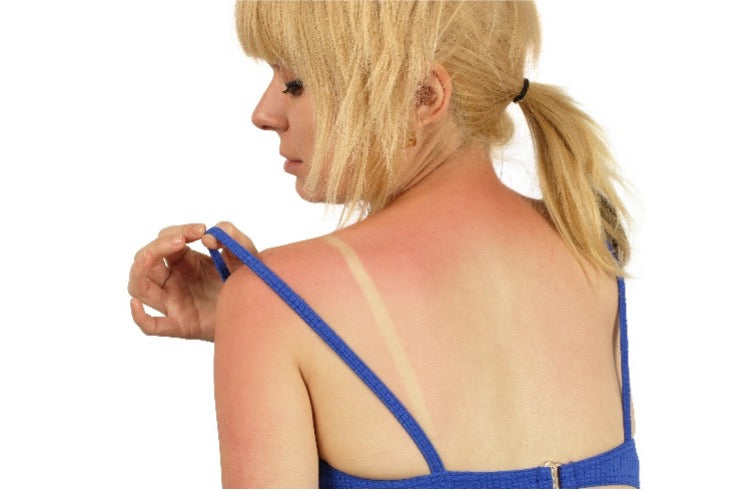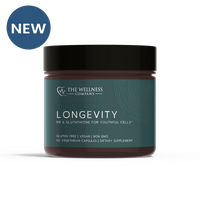When Fun in the Sun Doesn’t Mix with Your Meds

When out in the sun, do you burn easily? Do you have a rash a few days after being out in the sun? It may be your medication. There are a wide number of medications that don’t mix with the sun. From antibiotics to cholesterol-lowering drugs and even over-the-counter pain relievers, the drugs you take may be part of your sun sensitivity problem.
And if you think that slathering on sunscreen will protect you, think again. Full spectrum SPF sunscreens protect only against one type of the sun’s rays- but not the type that causes sun sensitivity.

Photosensitivity
Photosensitivity is a reaction to sunlight or UV light from artificial light such as a tanning booth. It can cause sunburn-like symptoms, such as a rash or red skin. Topical, oral, or injectable medications can all cause photosensitivity. Even some make-up and lotions can trigger a reaction to the sun.
There are two types of photosensitivity- phototoxicity and photoallergy.
Phototoxicity, which is more common, is an irritation of the skin and can occur within a few hours of sun exposure. It can cause a sunburn-like effect on the skin when you go out in the sun. Your skin may immediately react to sun exposure, or it could take up to 24 hours for symptoms to show up. This type of sensitivity is much more common than photoallergy.
Photoallergy is an allergic reaction of the skin and may not occur until several days after sun exposure.
The FDA has compiled a list of medications that can cause sun sensitivity
Below is a partial list of medications that can cause sun sensitivity. This is not an exhaustive list. Check with your care provider and pharmacist if you are on any of these medications for further guidance.
- Antibiotics (ciprofloxacin, doxycycline, levofloxacin, ofloxacin, tetracycline, trimethoprim)
- Antifungals (flucytosine, griseofulvin)
- Antihistamines (cetirizine, diphenhydramine, loratadine, promethazine, cyproheptadine)
- Cholesterol-lowering drugs (simvastatin, atorvastatin, lovastatin, pravastatin)
- Diuretics (thiazide diuretics: hydrochlorothiazide, chlorthalidone, chlorothiazide.; other diuretics: furosemide and triamterene)
- Non-steroidal anti-inflammatory drugs (ibuprofen, naproxen, celecoxib, piroxicam, ketoprofen)
- Oral contraceptives and estrogens
- Phenothiazines (tranquilizers, anti-emetics: examples, chlorpromazine, fluphenazine, promethazine, thioridazine,)
- Psoralens (methoxsalen, trioxsalen)
- Retinoids (acitretin, isotretinoin)
- Sulfonamides (acetazolamide, sulfadiazine, sulfamethizole, sulfamethoxazole, sulfapyridine, sulfasalazine)
- Sulfonylureas for type 2 diabetes (glipizide, glyburide)
- Alpha-hydroxy acids (AHAs) in cosmetics
Not all people who take or use the medicines mentioned will have a reaction. Also, if you experience a reaction on one occasion, it does not mean that you are guaranteed to have a reaction if you use the product again. (1)
Reduce your risk of reacting to the sun
If you suspect you may be taking a medication that is making you sun sensitive, there are a few things you can do. If you are on a short-term antibiotic, check with the pharmacist and find out when it will be safe to go out in the sun after your last dose. It may take several days before the photosensitive effects wear off.
In addition, you can
- Avoid sun exposure during the middle of the day.
- Cloudy days do not protect you from UV light. Practice sun exposure precautions even on cloudy days.
- Wear long sleeved shirts, and hats and cover all skin or stay out of the sun completely
- Choose a broad-spectrum sunscreen. Broad-spectrum sunscreens protect from both UVA and UVB rays.
- You can get reflective light from water, sand, and even snow in the winter with the sun. Protect your skin accordingly.
- Car windows block UVB rays, but not all UVA rays. Tinted windows do provide some protection from UVA rays, but you still need to protect your skin from exposure. (2)
How to choose a safe and effective sunscreen
The Environmental Working Group, a consumer advocacy group that works to protect the general population from harmful chemicals and additives, has assessed 1,700 sunscreens for ingredient safety and sun protection efficacy. Only one in four of the sunscreens met EWG standards.
Choose a broad-spectrum sunscreen. A broad-spectrum sunscreen protects against both UVA and UVB rays.
- UVA rays are more likely to cause drug-induced photosensitive reactions, however, on occasion, UVB rays can also cause photosensitivity. When choosing a sunscreen, use the EWG guide to find a sunscreen that can adequately protect you from reactions. This does not mean you can abandon other safe sun exposure practices, but this will add another layer of protection. (3)
- Apply sunscreen every 2 hours. Avoid swimming during the peak sunlight hours, but if you do, reapply sunscreen at least every hour.
- Avoid ingredients of concern and look for mineral products with zinc oxide.
- Don’t fall for high SPF labels. SPF values are determined by how well a product will protect from UVB rays, the main cause of sunburn and some skin cancers. UVA rays penetrate the skin more deeply than UVB rays and are associated with skin aging and cancer, such as melanoma.
- Choose lotions and sticks over sprays.
- Use EWG’s list of top-rated sunscreens and EWG Verified to find the products that work best for you.
References
- S. Food and Drug Administration. (2024, June 30). Sunscreen: How to help protect your skin from the sun. Retrieved July 3, 2024, from https://www.fda.gov/drugs/understanding-over-counter-medicines/sunscreen-how-help-protect-your-skin-sun
- Hampton PJ, Farr PM, Diffey BL, Lloyd JJ. Implication for photosensitive patients of ultraviolet A exposure in vehicles. Br J Dermatol. 2004 Oct;151(4):873-6. doi: 10.1111/j.1365-2133.2004.06098.x. PMID: 15491429.
- https://emedicine.medscape.com/article/1049648-overview?form=fpf&scode=msp&st=fpf&socialSite=google&icd=login_success_email_match_fpf
Written by Brooke Lounsbury














